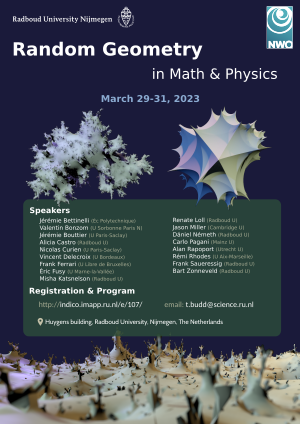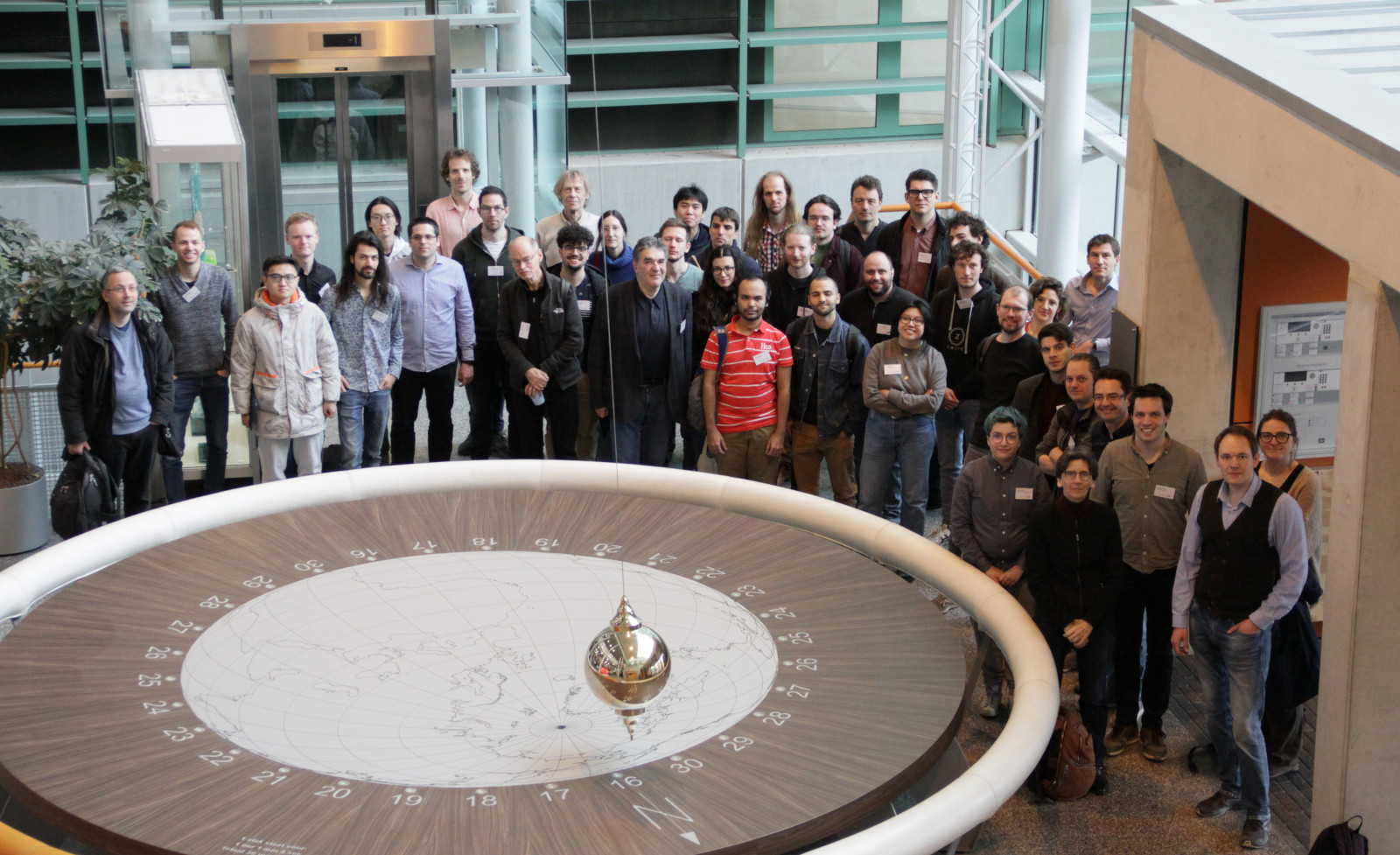Random Geometry in Math & Physics
Huygens building, Radboud University
 The idea of this workshop is to bring together mathematicians and physicists whose research features random geometry in one way or another, to share insights and open problems, and to encourage interactions between disciplines. Developments over multiple decades in physics, dating back to early investigations in string theory, and in more recent times in the mathematical fields of probability and combinatorics have demonstrated that random geometry, i.e. the search for stochastic models of (Riemannian or more general) metrics on manifolds, continues to be a source of new interesting phenomena and connections between research fields.
The idea of this workshop is to bring together mathematicians and physicists whose research features random geometry in one way or another, to share insights and open problems, and to encourage interactions between disciplines. Developments over multiple decades in physics, dating back to early investigations in string theory, and in more recent times in the mathematical fields of probability and combinatorics have demonstrated that random geometry, i.e. the search for stochastic models of (Riemannian or more general) metrics on manifolds, continues to be a source of new interesting phenomena and connections between research fields.
In physics, random geometry naturally arises in the pursuit of quantum gravity, e.g. through lattice approaches like (Causal) Dynamical Triangulations, renormalization group methods in gravity, but also in string theory, holography and the statistical physics of membranes in condensed matter. In mathematics, random geometry has been subject of study from various interconnected angles: random planar maps and their scaling limits in the form of Brownian geometry, Liouville Quantum Gravity, but also through probability measures on moduli spaces of hyperbolic surfaces and related structures. Although many insights have found their way between these fields, plenty of challenges remain that could benefit from the different perspectives that these fields provide.
Speakers
- Jérémie Bettinelli (École polytechnique)
- Jérémie Bouttier (IPhT, CEA, U Paris-Saclay)
- Alicia Castro (Radboud U)
- Alice Contat (U Paris-Saclay)
- Nicolas Curien (U Paris-Saclay)
- Vincent Delecroix (LaBRI, Bordeaux)
- Frank Ferrari (U Libre de Bruxelles)
- Éric Fusy (CNRS, U Marne-la-Vallée)
- Misha Katsnelson (Radboud U)
- Renate Loll (Radboud U)
- Jason Miller (U Cambridge)
- Dániel Németh (Radboud U)
- Carlo Pagani (Mainz U)
- Alan Rapoport (Utrecht U)
- Frank Saueressig (Radboud U)
- Bart Zonneveld (Radboud U)
Titles and abstracts for the talks are available on the contributions page and in the timetable.
Group Photo

Scientific organizer
 This workshop is supported by the Dutch Research Council (NWO) under project number 740.018.017.
This workshop is supported by the Dutch Research Council (NWO) under project number 740.018.017.
